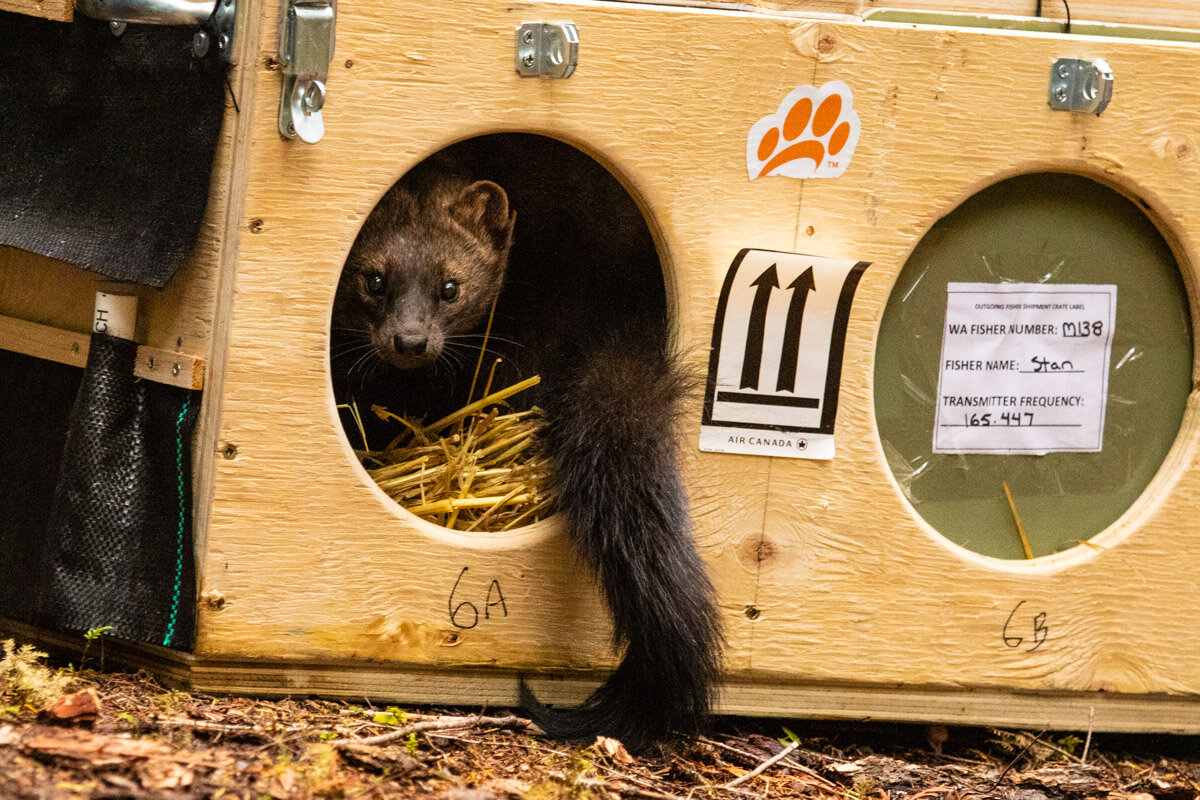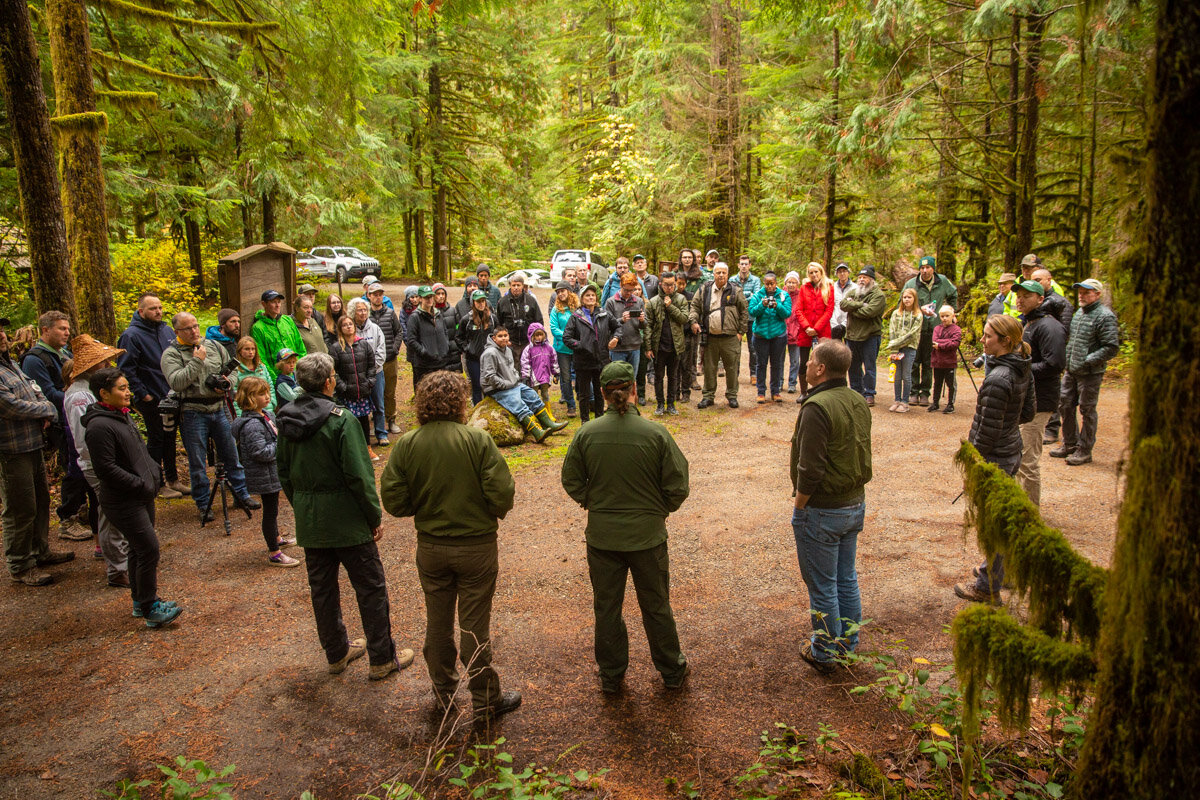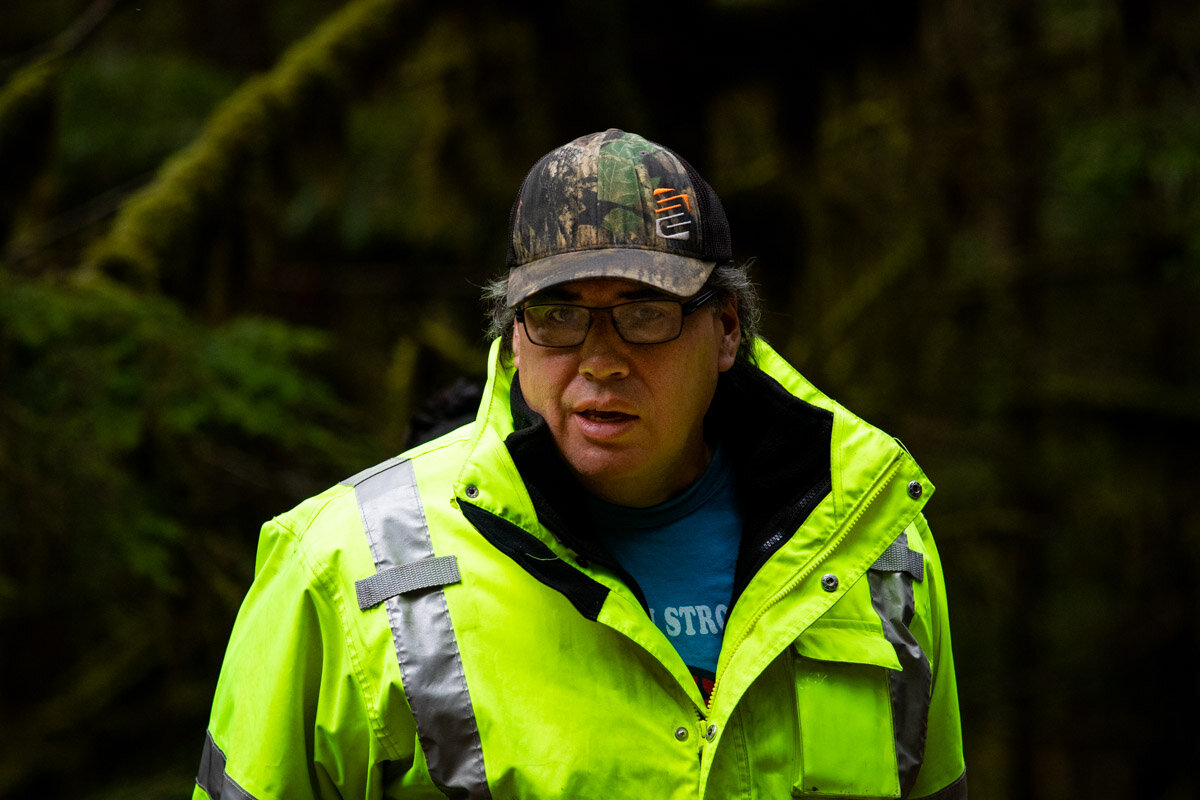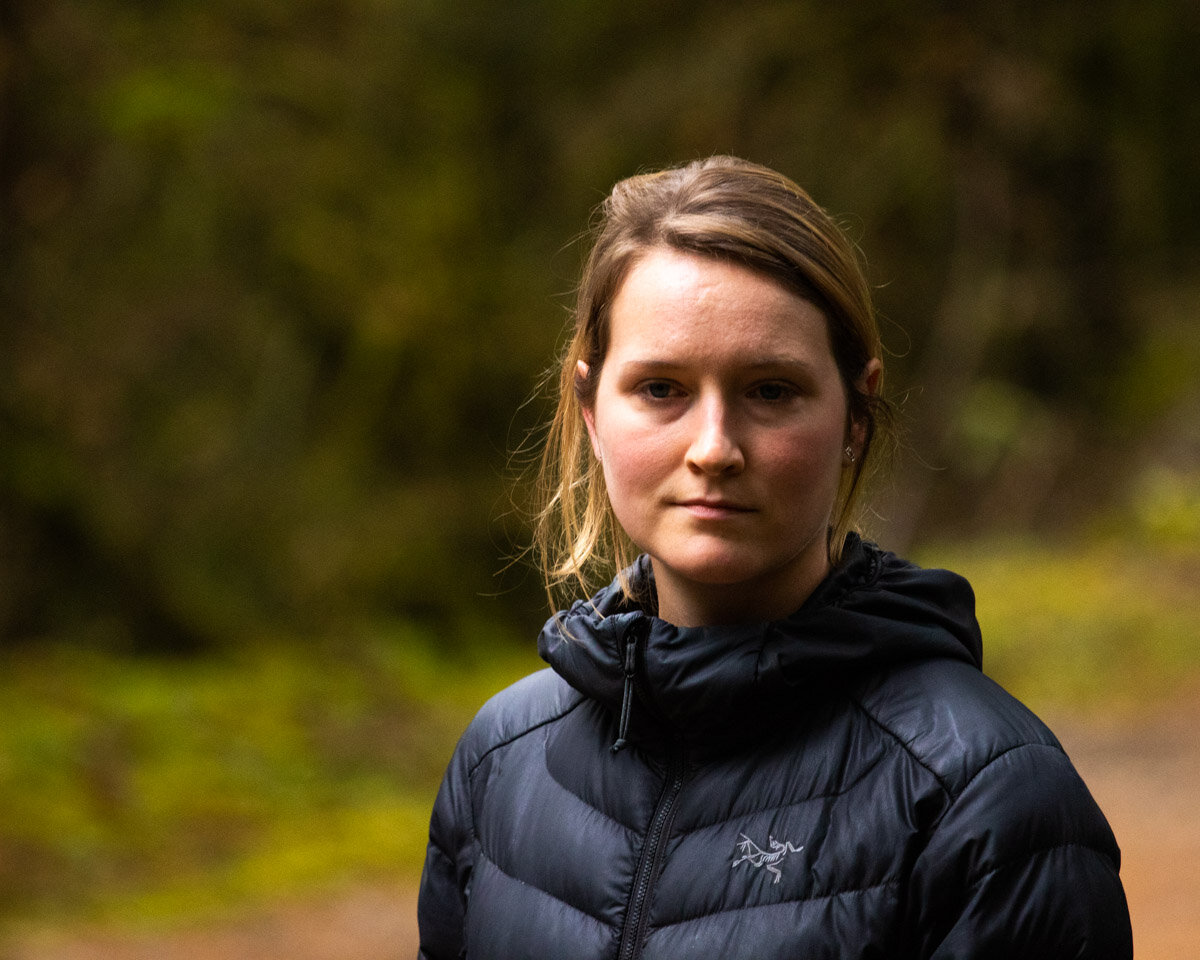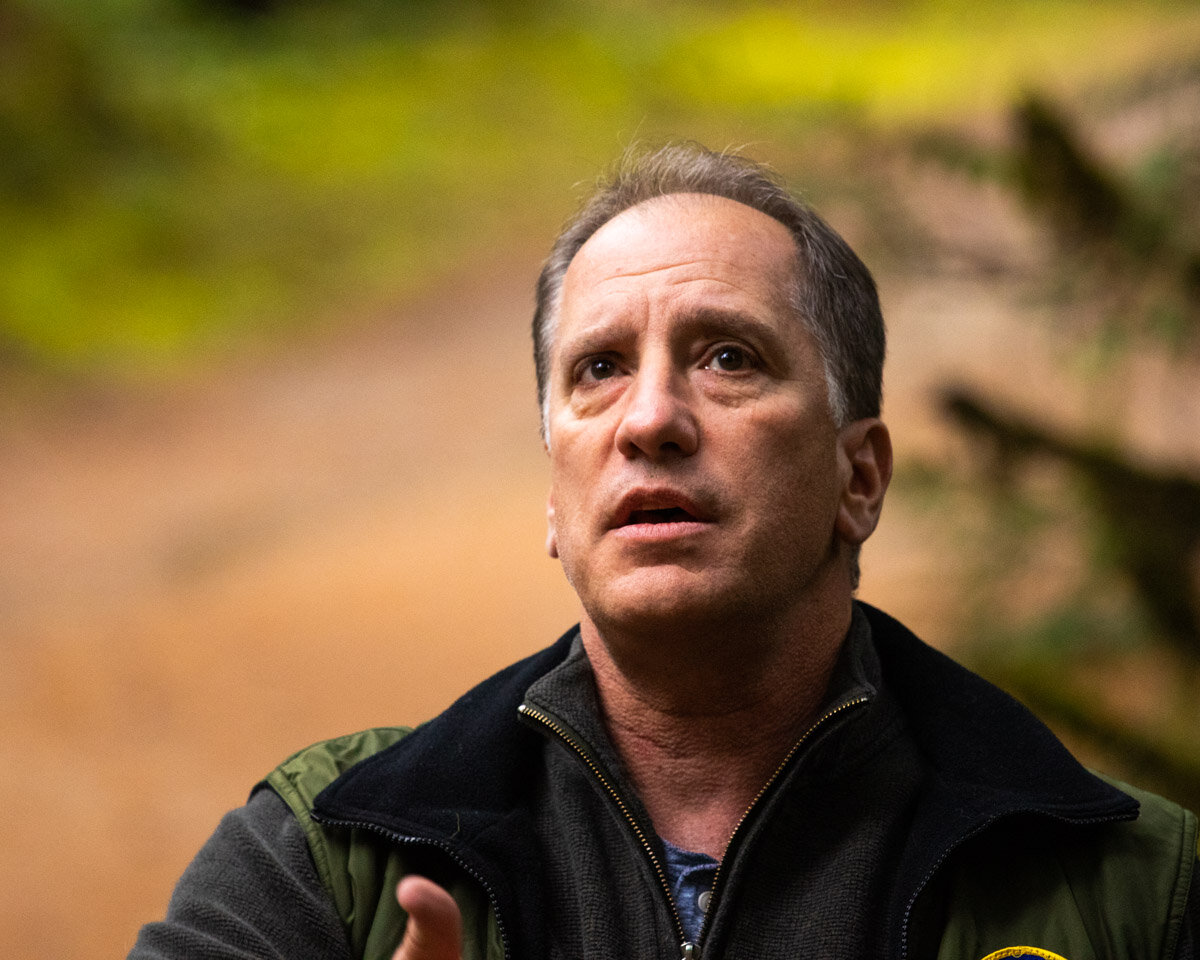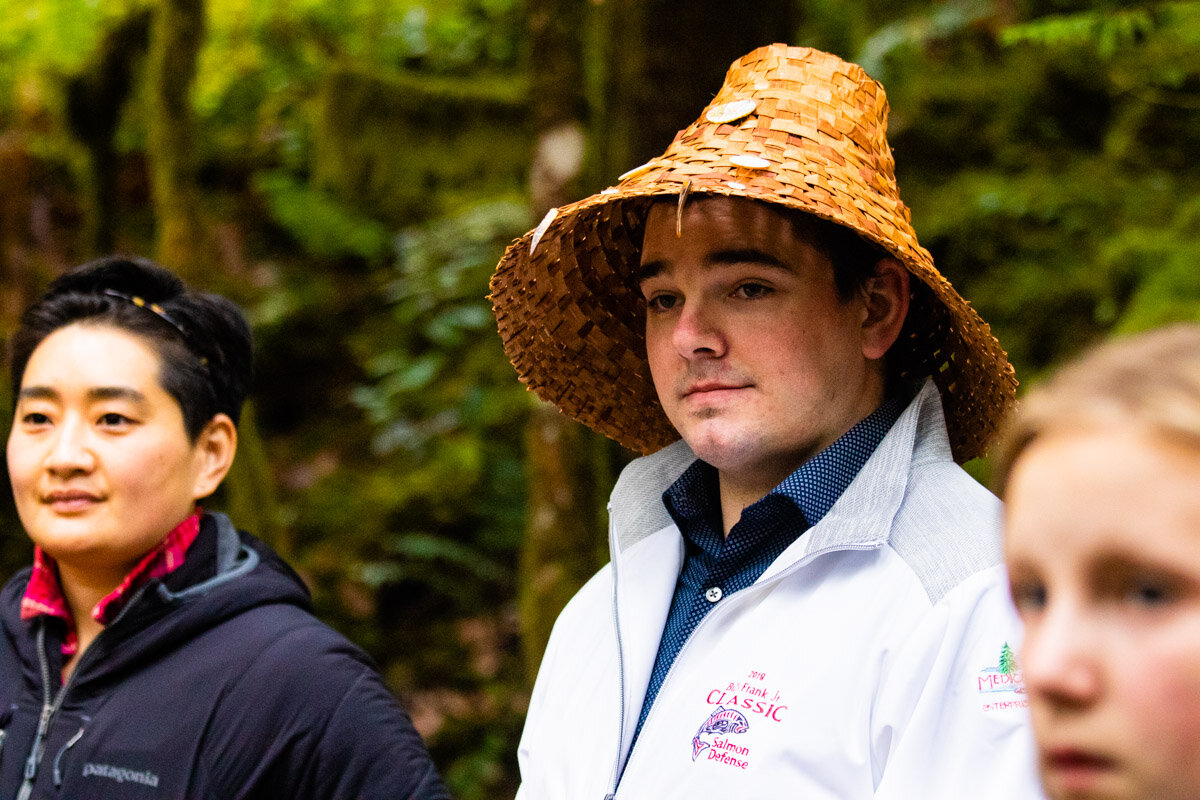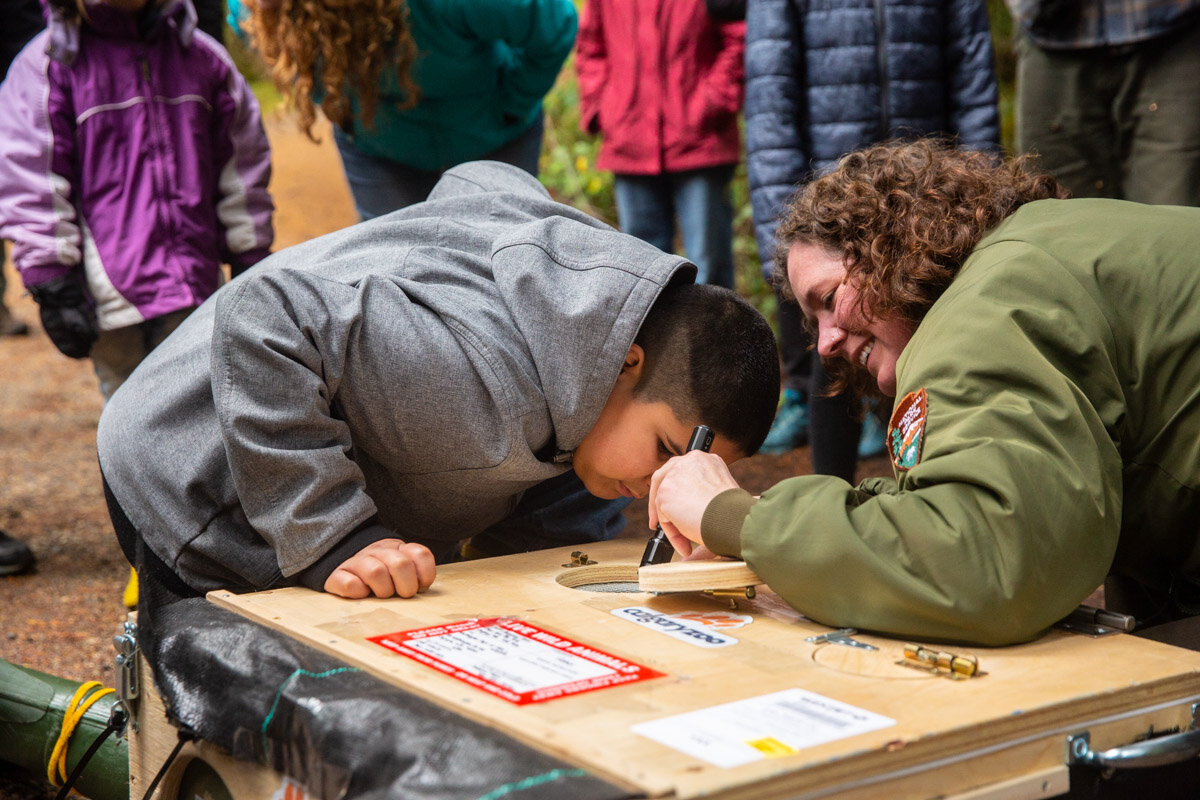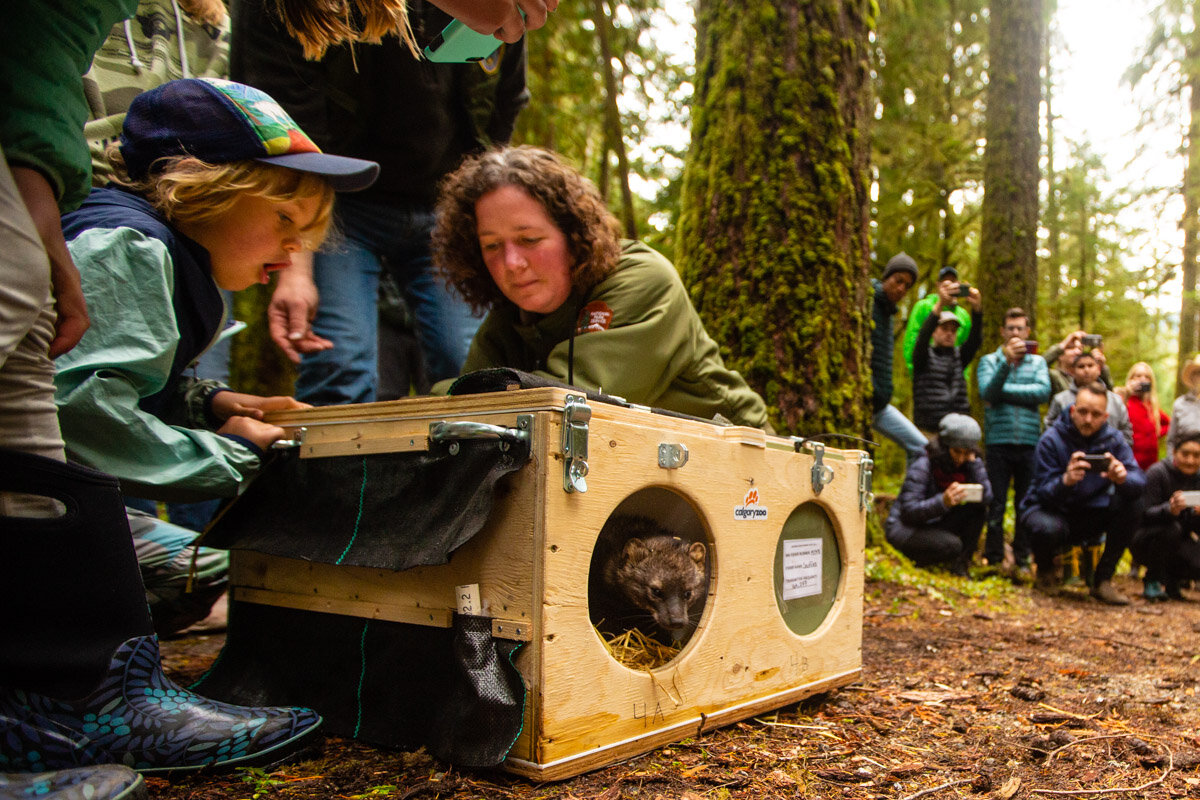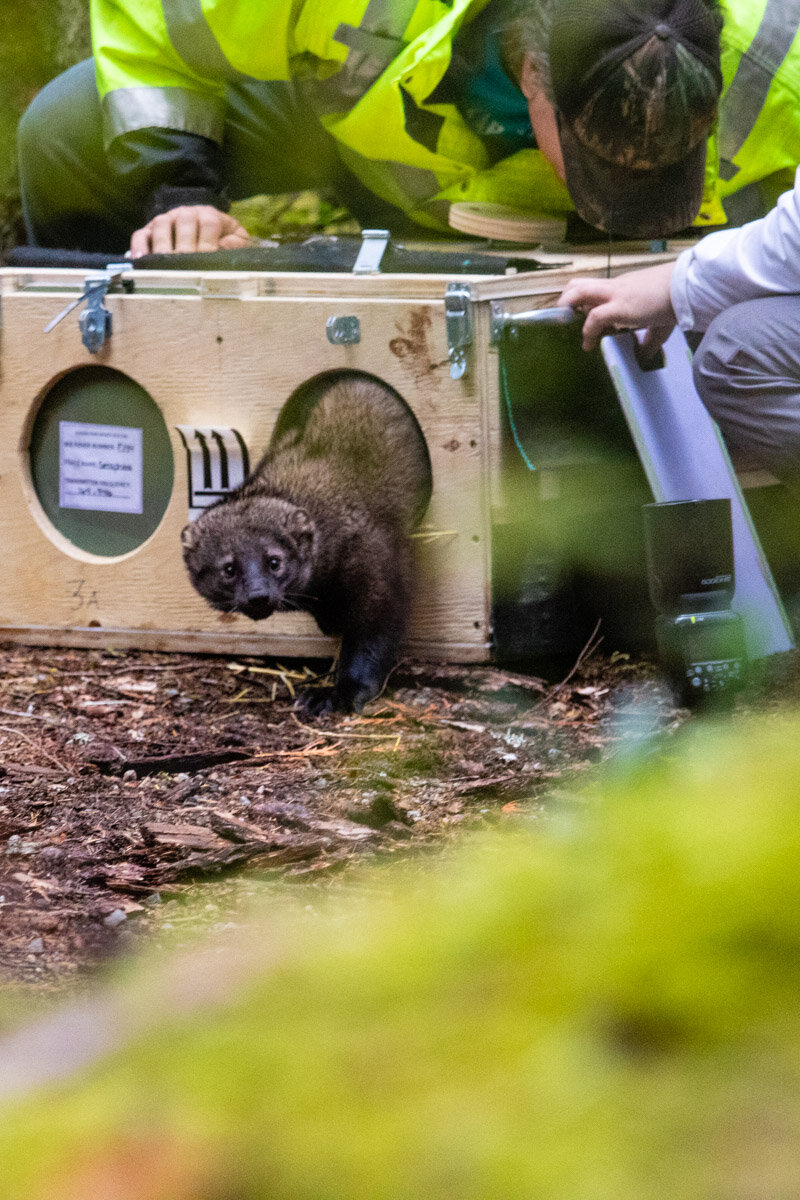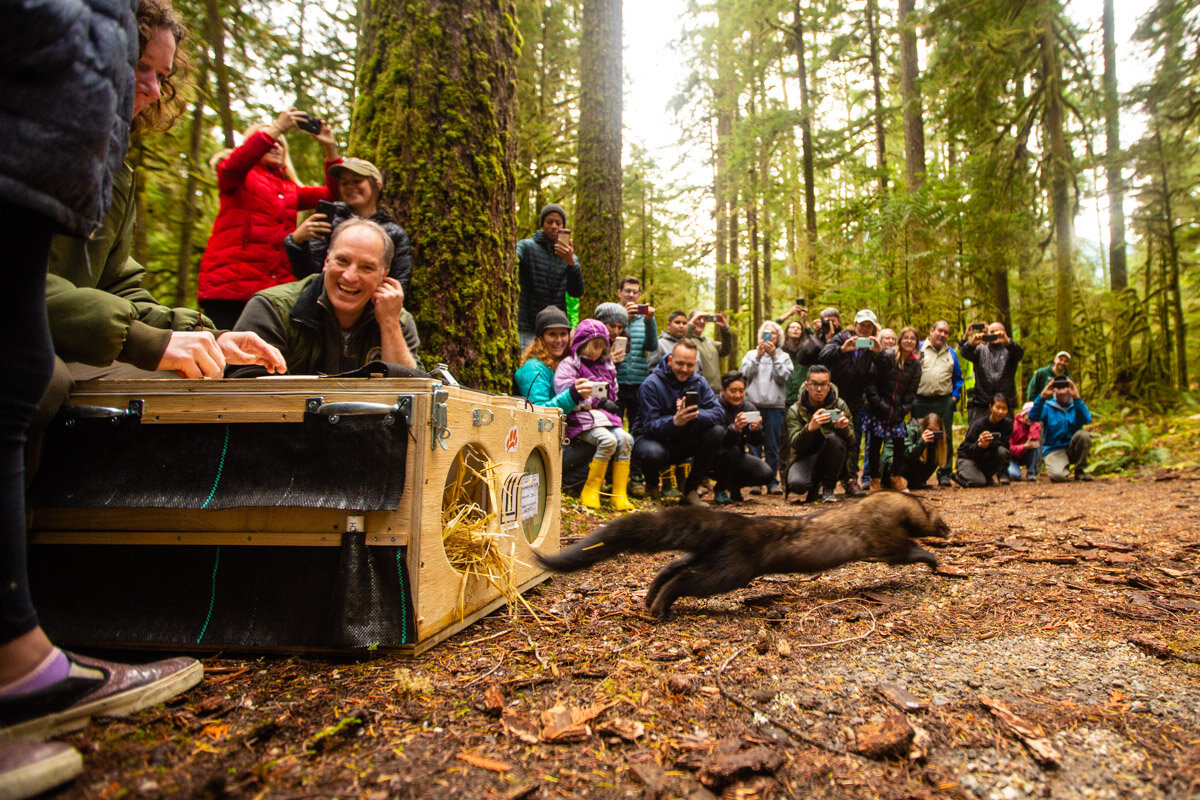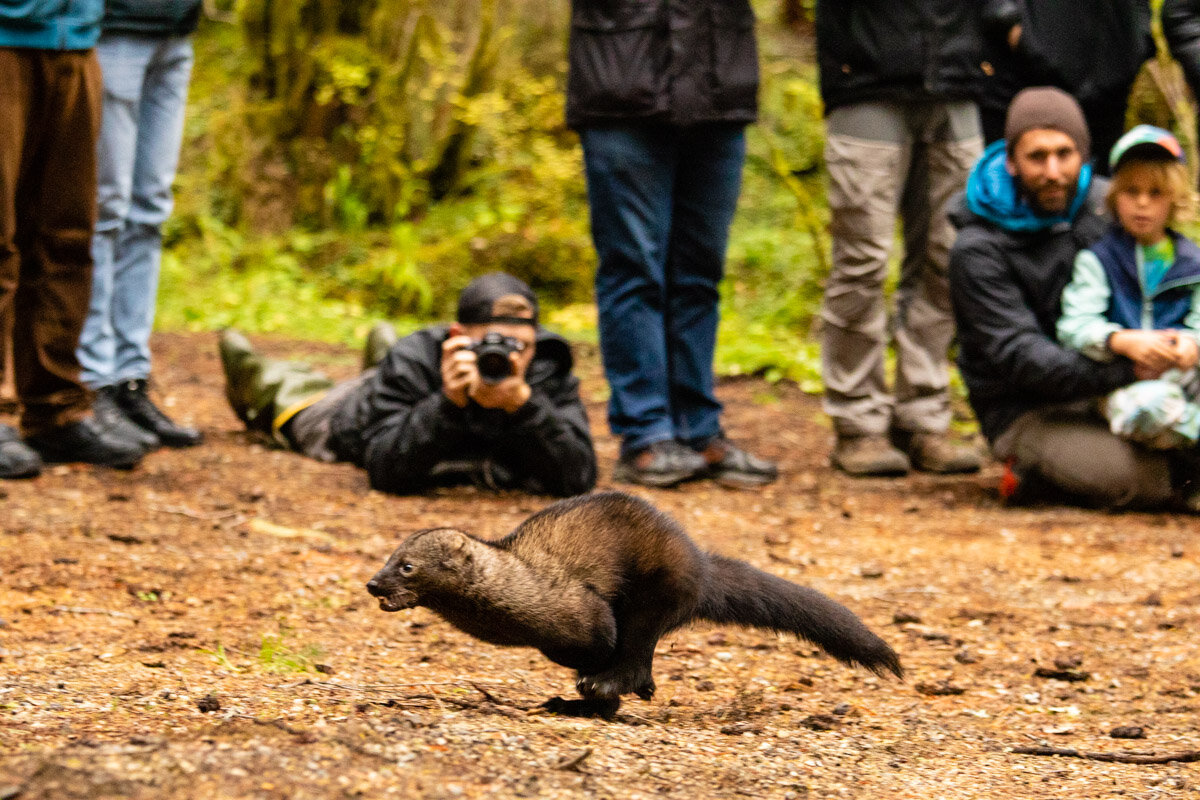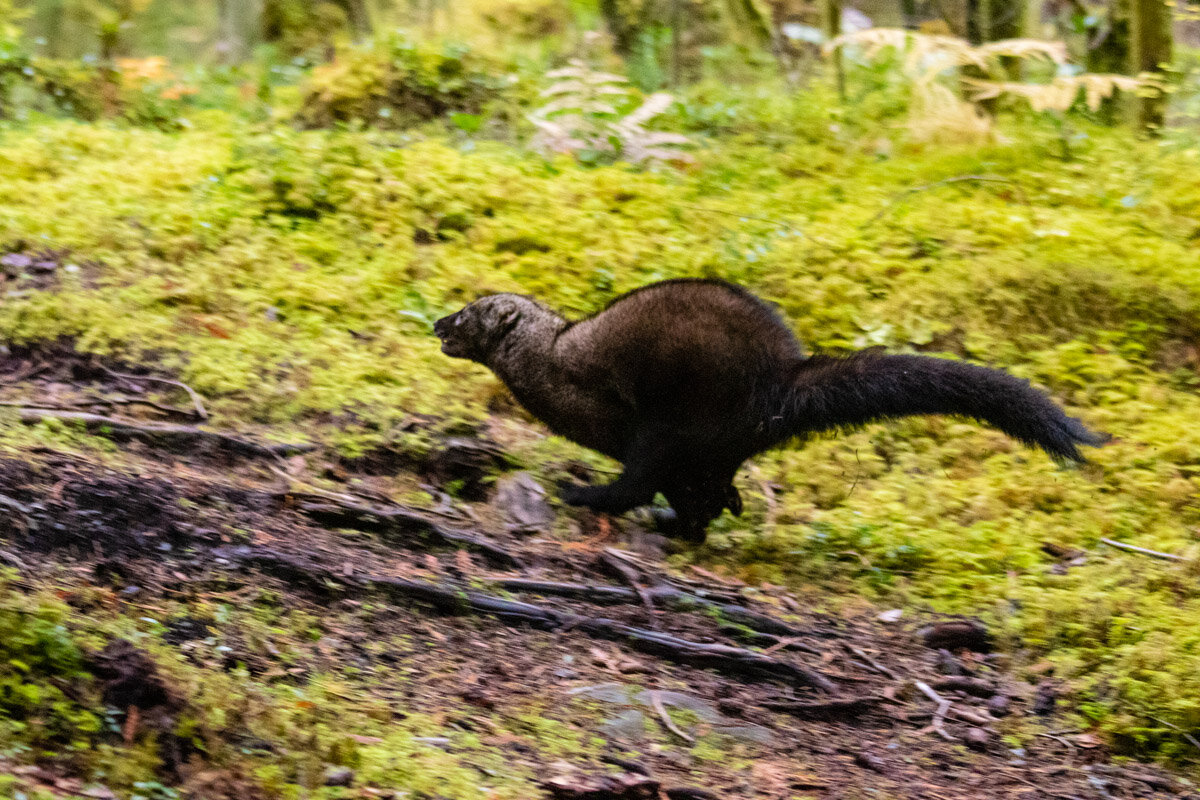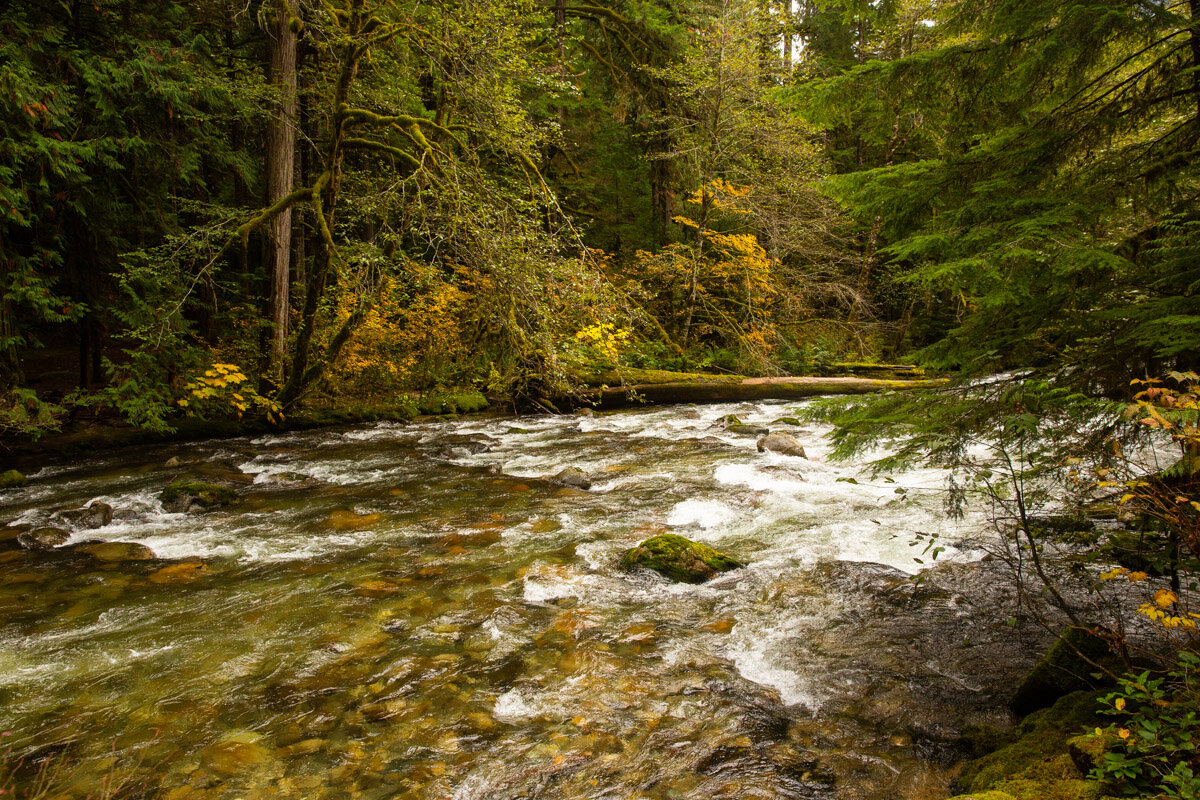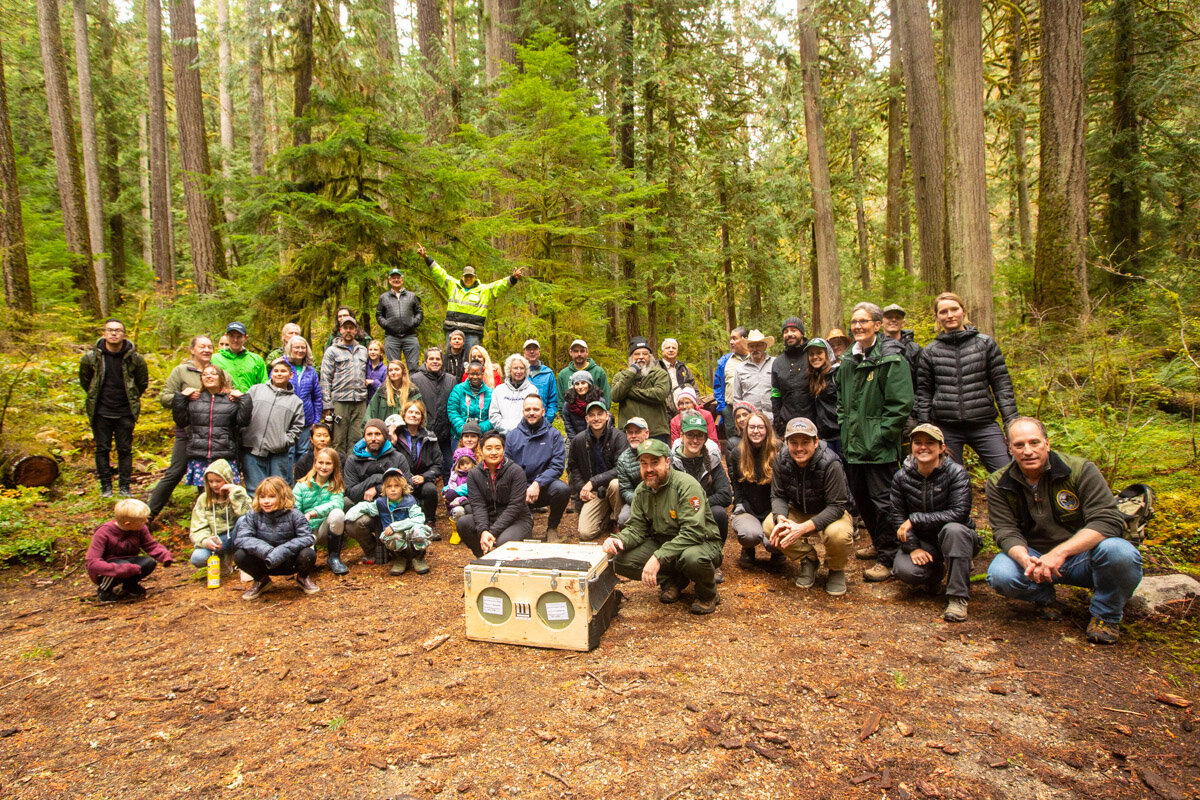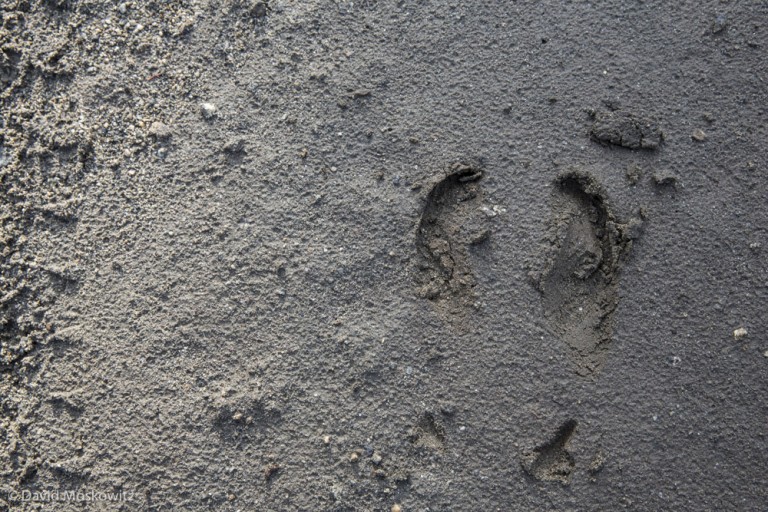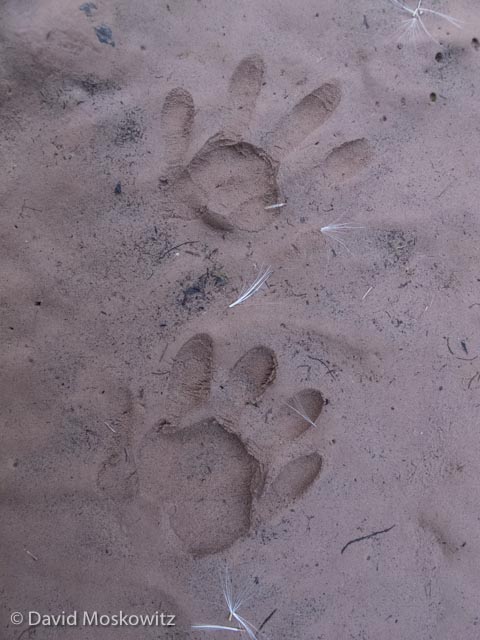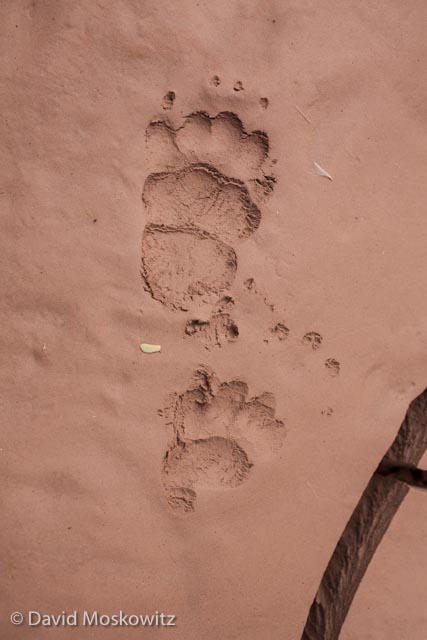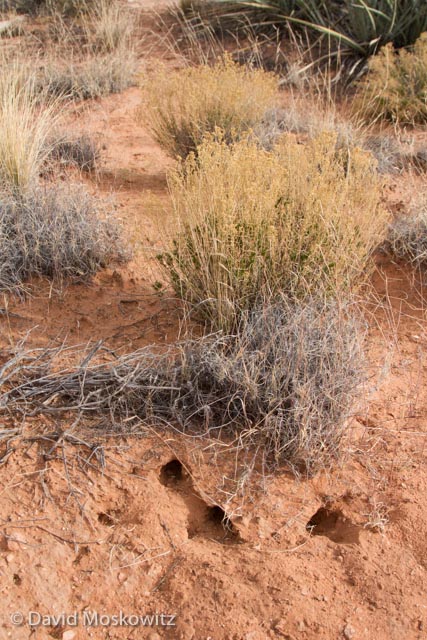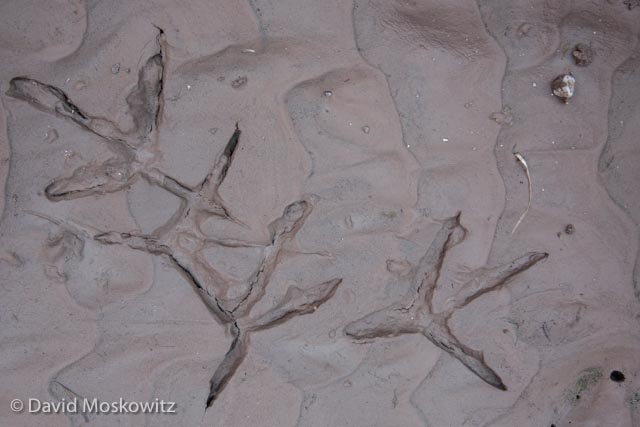This summer I spent a week traveling through central British Columbia’s Cariboo region searching for signs of fisher (Martes pennanti) and learning about why fisher populations appear to be disappearing from across much of the region. This trip was the start of field work for Echo Conservation’s Fisher Project.
Use Tracking Skills To Find & Photograph Elusive Wildlife: An Interview With David Moskowitz
This summer, my colleague Jaymie Hiembuch, asked me to do an interview with her for her great podcast: Impact: The Conservation Photography Podcast. I was delighted to join her for a conversation about something I don’t often talk about specifically—how to apply wildlife tracking skills for wildlife photography. Jaymie is a delightful interviewer and extremely talented photographer and storyteller.
Fishers return to the North Cascades
A partnership between tribes, multiple government agencies in the United States and Canada, and Conservation Northwest is bringing fishers back to the North Cascades. Fisher were extirpated from the region by fur trapping and poisoning campaigns in the 1900’s. On October 24, 2019, 8 fishers were released on the traditional territory of the Sauk-Suiattle Tribe on the west slope of the North Cascades close to the town of Darrington, Washington.
Scent marking black bears
While camera trapping this summer for wolverines I got an awesome series of photos of black bears communicating with each other through scent marking on a tree in the North Cascades of Washington (Nlaka'pamux First Nation Traditional Territory).
A black bear smells a marking tree to learn about other bears that have visited the tree.
When bears mark trees they focus on two heights on tree, about bum height (for the bears) and should height for a standing bear. Here you can see the same bear inspecting the scent left behind by a previous bear.
And here’s the bear the first one was smelling rubbing its head against the tree. This black bear has a much lighter brown coat of fur.
The same brown colored black bear rubbing its shoulders and back on the tree.
Fishers Return to the North Cascades
Southern Selkirks Herd Declines But Efforts to Save Caribou and The Rainforest Continue
"Functional Extinction" But Most Definitely NOT Game Over.
Many of you may have caught wind of the recent news about the continued decline of the Southern Selkirks herd, the last transboundary herd of Mountain Caribou. Their story was featured in articles in the New York Times in the United States and The National Post in Canada, both featuring an image from this project of one of the last animals from this herd.
While these two stories had catchy headlines, they generally missed that, for the tribes and conservation groups working on this topic, it is most certainly not "game over". See this article in the Northwest Sportsman Magazine which includes an interview with Kalispell Tribal biologist Bart George, this press release put out by project partner Yellowstone to Yukon Conservation Initiative, and this blogpost from Conservation Northwest.
This news marks the start of a pivotal moment for the conservation of the Caribou Rainforest. Indigenous peoples legal rights to access these traditional animals are not just rolling over with this news. Now is a moment to continue to stay engaged in this topic in support of their legal rights and our society's moral obligations.
With the potential demise of this and a number of other herds, habitat protected for them could go back on the chopping block. This ecosystem, for which the caribou is emblematic, will need protection with or without caribou. Along with our continued support of caribou specific conservation efforts, we must also seize this moment to grow our message to focus consistently on the Ecosystem rather then just the species.
To that end, I am excited that the photography book which is the culmination of much of the work of this project will be out this fall. Our film, Last Stand: The Vanishing Caribou Rainforest, is an expose of the destruction ongoing in this ecosystem. The Caribou Rainforest: From Heartbreak to Hope, published by Braided River, is our attempt to celebrate and highlight this amazing and overlooked ecosystem, one of the most unique forest ecosystems on planet Earth. With or without caribou, The Caribou Rainforest is a place worth protecting. For all the other creatures that call this place home, for all the people whose lives and cultures are tied to it, and for everyone who depends on a stable climate and cares about what future generations will be inheriting from us.
This fall, along with the release of the book and a renewed schedule of slideshows and film screenings we will be releasing the film for online viewing in order to get these two messages out as far and wide as possible.
We continue to be grateful for all the support we have received up to this point and continue to look for funds and opportunities to get our material and message out as far and wide as possible. Braided River is currently fundraising to support outreach activities aligned with the release of the book.
More work ahead. We carry one.
Mountain Caribou Initiative: Camera Trapping for Carnivores
Text and photos by David Moskowitz Caribou are not the only animal tough to track down in the Caribou Rainforest ecosystem. As part of our efforts to tell the story of all of the creatures that call these mountains home, I have been setting camera traps this winter in collaboration with Swan Valley Connections in northwestern Montana and the Yellowstone to Yukon Conservation Initiative in the panhandle of Idaho this winter to capture images of some of the rare and elusive carnivores that depend on this wild landscape. Here are a few images from this winter field work and some out-takes of images from the camera traps.
Anything unusual about this snowmobile packing job? Researchers in Idaho and Montana are using beaver carcasses or deer legs as attractants to lure rare carnivores like Canada lynx and wolverines to bait stations set up with hair snagging devises to collect genetic samples from animals without ever having to see or handle the animals. I’ve been hitching a ride out into the field with researchers and setting up my camera traps adjacent to their bait stations.
Cody Dems (left) and Adam Lieberg set a bait station in the Mission Mountains of Montana.
Cody inspecting the fresh trail of a wolverine in Montana.
A Canada lynx enjoys some sunshine in a photo from one of my camera traps in Montana. Got many photos of this fellow in this beautiful subalpine forest. Its been many decades since caribou roamed these forests but lynx continue to call these mountains home.
A photo bombing snowshoe hare set up in front of another camera in the Selkirk Mountains in Idaho.
An American marten takes in a snowy night at the same camera trap as the snowshoe hare above.
Learn more about the Mountain Caribou Initiative here. Stay tuned for the trailer for our forthcoming film which should be out this spring. For updates on the film and other material forthcoming from the project, sign up for quarterly emails on the About page of my website.
Mountain Caribou Herds: A Single Organism
Mountain Caribou Herds: A Single Organism
text by Kim Shelton
Recently, I was listening to a podcast by Richard Nelson, a cultural anthropologist who studies human relationships with the natural world. He was recording in the midst of a great caribou migration up in Alaska. As he spoke I could hear the clicking of their hooves and their grunting. His description was so vivid that it felt like I was there in his shoes, being overwhelmed by the smells and the vibration of the earth. He said at one point that observing the caribou made him think that each individual caribou is really just a single cell in a bigger organism. According to Nelson, so much of their existence and identity is wrapped up in being a part of the herd that when one gets separated it's hardly even a caribou anymore.
Mountain Caribou don’t migrate vast distances like the Barren Ground Caribou do, but they are herd animals and they migrate through the elevations, up-and-down, twice a year. Listening to Nelson’s account, I recalled searching for the South Selkirk heard with Dave this summer, a group with only about thirteen individuals at the moment. We were searching for them during the summer so we could get up into the mountains without the snow to impede us. This is also the time of year that Mountain Caribou disperse to avoid predators, so they were extremely difficult to find. As opposed to forming a cohesive unit like they would during the rut in the fall, these few animals were scattered across a patchwork quilt of clearcuts, highways, and intact subalpine forest. They were miles away from each other. Despite their being only thirteen caribou remaining, I wondered why they weren’t travelling together. In a more stable population these Caribou would still be spread out, but would they be completely alone? To a caribou does thirteen even feel like a herd when the comparison is hundreds, even thousands? How big must a herd be to have a gravitational pull on the individual to the whole?
Dave and I were invited to explore the Nature Conservancy of Canada’s Darkwoods Conservation Area to search for signs of the South Selkirk herd. Several of the animals in this herd are fitted with GPS collars so wildlife managers can track their movements. Even knowing general locations where a caribou had been recently, in days of searching, we couldn't even find fresh sign of a caribou from the herd, let alone see an actual animal. I thought about how it might feel to be an animal whose entire identity is dependent on the existence of the herd, and to be roaming the land alone. What is a caribou without it’s herd? To me, it meant they were un-findable, invisible, seemingly mythical. It's almost like they're already gone.
I wonder about the South Selkirk Herd's will to survive when they're living life so far from their evolutionary blueprint—in such small numbers at the very southern tip of the caribou universe. How much fight is in them, how much resilience is left as a single cell, disconnected from a greater organism?
This spring we will be headed out on another expedition to Mountain Caribou country, this time further north where populations are larger. Stay posted for updates on how these herds travel together and disperse.
MCP Field Notes: Visiting the Kennedy Siding Herd
MCP Field Notes: Visiting the Kennedy Siding Herd
Text by Marcus Reynerson
In late November 2015, Dave and I embarked on a short and spontaneous trip up to central British Columbia to search for mountain caribou in their early winter habitat. Many miles on the road, numerous podcasts, sub-freezing temperatures, and Coconut Cream Pie defined the contours of our journey to photograph Rangifer tarandus. We traveled to the northern extent of mountain caribou range in the Rocky Mountain Trench so we could catch a glimpse of the Kennedy Siding herd – a group of just under 50 animals that reside south of Mackenzie, BC.
Two bull’s from the Kennedy Siding herd sparing.
A glimpse into fall field conditions for caribou and photographers alike. Photo by Marcus Reynerson.
In the heart of country dominated by the logging and pulp industry, Mackenzie was first settled in the mid 1960s after being established by British Columbia Forest Products. The town boasts itself as home to the “world’s largest tree crusher” – a massive mechanical beast, that proved to be inefficient and, by most accounts, inept in its bid to clear land when the massive Williston Reservoir was constructed adjacent to Mackenzie. While the piece of machinery itself – the Le Tourneau G175 – was, indeed, impressive at 175 tons, there was an air of awkward heaviness pervading an industry town existing specifically so people can pull up a forest like old carpet. A little online research led us to this meditative video of tree crushers doing what they do best (crushing trees). This is, perhaps, representative of the general headwind that the slim Kennedy Siding herd is facing as it tries to carve out an existence here.
Marcus Reynerson following the trail of several caribou through fresh snow.
Marcus Reynerson inspecting where a caribou dug through the shallow fall snow to access forage, in this case terrestrial lichens.
Several members of the Kennedy Siding herd in the thick pine forest characteristic of their late fall-early winter habitat.
We were fortunate to visit with Doug Heard, a wildlife biologist from the University of Northern British Columbia, who helped us find the local herd in a large pine flat near Mackenzie. Doug is currently spearheading an experimental feeding program for the Kennedy-Siding herd, to see if this might increase the fitness and survival rates of members of this herd. While the long-term hopes of Caribou survival depend on far greater and more complex conservation issues – industrial logging, oil and gas extraction, winter recreation by humans in caribou habitat, and climate change – shorter-term “stop-gap” tactics are under way to help these animals hang on in the meantime. Doug has had his hands in many of these efforts, including maternity penning, predator control, and feeding regimes. It was a great pleasure and privilege to spend a few days with these animals and observe them. I’m grateful for Doug’s hard work and heart he is bringing to his work with the Kennedy-Siding herd.
Biologist Doug Herd helping us get oriented for our field trip at his home office in Prince George, BC.
David Moskowitz braves a fall snow-storm to capture caribou photos. Photo by Marcus Reynerson.
MCP: Cowboy Coffee
Mountain Caribou Project presents: Cowboy Coffee
Everything you ever needed to know about making a really bad cup of coffee in the wilderness....and a little bit about endangered mountain caribou too!
MCP: Of Caribou and Foolish Apes
Guest blog post by Marcus Reynerson; photography by David MoskowitzMarcus Reynerson joined me for a week and a half on the Mountain Caribou Project in the Columbia mountains and Rocky mountains last month. Here are a the first of his reflections from our time in the field.--DM
The end of 88 km of logging roads in the Columbia Mountains. A recent rainforest clearcut.
Humans. Sometimes I find myself so unimpressed. After driving kilometer upon kilometer of BC logging roads though a clear-cut landscape, parts of which were old-growth inland temperate rainforest just 5 years ago, I could not escape my disappointment with Homo sapiens. It boggles my mind to think about how often we accept and value short-term gains at the cost of our long-term future. At the cost of our health, our children’s health, and the health of the planet that gives us life. The more blunt thought that pervaded my travels: “We are just a bunch of dumb apes.”
Marcus Reynerson inspecting a caribou antler he discovered in the old growth forest just uphill from the end of the road and the last clearcut in the valley.
Dave and I were on the trail to find sign – and eventually a live sighting hopefully – of the elusive mountain caribou. Dave was in the field for almost three weeks when I joined him in the Columbia mountains of southern British Columbia. Mountain caribou have developed a survival strategy that is based on being extremely hardy. Basically, they’ve adapted to thrive in environments that are marginal at best for other similar species. Unfortunately, Humans have heavily encroached upon an already hard-pressed landscape. Places ideal for these caribou to call home are dwindling at a precipitous rate. Climate change is taking a strong toll. As the temperature warms, plant communities and ecology are rapidly changing. In some places, the moist cool sub-alpine meadows that have historically supported caribou are disappearing as they become more forested. Overharvesting of timber is creating habitat amenable to deer, elk and moose, which bring predators that are following these ungulates into closer contact with caribou.
Log truck carrying old-growth cedar trees out of caribou country.
It was an incredible tension that I felt cruising the logging roads of British Columbia. For some reason, the province is still harvesting old-growth trees. I found myself incredulous that this was happening still in 2015. The valleys where caribou call home are so beautiful, while at the same time so sad and tragic. Such beauty and devastation all in one place, as far as the eye could see. I’m excited to dig deeper into this story. And I’m also nervous. While it’s a story about the Mountain caribou, it’s also a story about humans. I’m so impressed with the former. At this point I can’t say the same about the latter. More thoughts to come...
When Marcus Reynerson isn't waxing philosophical on the role of humans and caribou in the world, he is the coordinator of the Anake Outdoors School at Wilderness Awareness School in Duvall Washington.
Click here to learn more about the Mountain Caribou Project.
Trees at the edge of a clearcut. Upper Seymour River valley, British Columbia.
MCP Field Notes: North Columbia Herd.
Looking out across the section of the Columbia Mountains I explored within the home range of the North Columbia Caribou herd.
The town of Revelstoke, British Columbia sits on the banks of the Columbia River. North of town, on both banks of the reservoir created by the impounded Columbia lives the North Columbia caribou herd. This herd has been fairing better in the past several years than many of the herds further south. The reasons for this appear to include a collection of issues including habitat protections, limits on recreational impacts from snowmobiling and helicopter ski opporations and a drastic reduction in moose populations (through human hunting) which has lead to a natural decline in wolf populations and in turn less pressure on caribou. This herd has also been the focus of a program to pen some of the herd's pregnant females during the spring and early summer. The females and their calves which were born in the protection of the pen are released in the midsummer where they rejoin the rest of the caribou in the wild. This project is in its second year (Learn more about it at Revelstoke Caribou Rearing in the Wild). I spent three days in the heart of their range for this herd in the mountains northwest of Revelstoke.
Numerous sets of fresh caribou tracks in the area told me I was in the right spot. Pictured is the hind foot of a bull caribou. Caribou are the only native North American hoofed mammal to regularly show dewclaws (the marks behind the main cleaves, feral pigs found in many places, though none in caribou habitat, also often register their dewclaws), though they show up more regularly in the fronts than hinds.
Early one morning, close to first light, I caught my first glimpse of a mountain caribou, a bull with antlers in velvet. Female caribou also have antlers, though smaller than the males, another unique feature of this species.
The subalpine landscape that caribou appear to prefer is one made of dense forests and wet meadows. This is a species that is definitely NOT afraid to get its feet wet.
The older tracks of a grizzly bear warned me that these creatures might be in the area. I spotted a mom and cub in the morning twilight on the day after I spotted the caribou. They didn’t spot me as they crossed an opening in the forest but also didn’t linger long enough for me to capture a photo of them. Though intrigued, I choose not to follow them to see if I might get another chance to see them. A little ways on I discovered the fresh tracks of a bull moose and calf heading into the same section of forest. An interesting story might have unfolded between these mothers and children of two of North America’s most ornery large mammals. I left this one as another one of the many mysteries that these dark forests hold.
The mosquitos and black flies were atrocious.
A Taste of the Canadian Rockies
Banff, Jasper, and Kootenay National Parks
This July I made my first trip to the heart of the Canadian Rockies, having previously only been as far north as Waterton National Park along the Canadian-United States boarder. Joined by fellow adventurer Marcus Reynerson, we departed Seattle on a sunny Thursday, bound for some of the tallest and grandest mountains in North America.
The Kootenay River flows from the crest of the Rockies through Kootenay National Park to the west, its waters eventually joining the Columbia River and heading to the Pacific Ocean.
The massive peaks and glacier dwarf a canoe on Lake Louis, one of the most popular destinations in Banff National Park. Later in my trip I was joined by several family members who dealt admirably with my camera affliction, including here while on Lake Louis.
Wildlife of the Canadian Rockies in Banff and Jasper National Parks
Marcus and I spent a number of days exploring alpine tundra, high mountain meadows, wetlands and riparian corridors searching for tracks and signs of wildlife. Highlights included signs of black and grizzly bears, Canadian lynx, and lots of moose and elk sign. Feeding sign of several species of woodpeckers was another highlight in the dense spruce-fir forests which dominated much of the lower elevations of the mountains.
This distinctive pattern on a lodgepole pine is the work of a red-napped sapsucker which drills into the bark to get the tree to exude sap. This sap attracts insects which the sapsucker returns to feed on. Jasper National Park, Alberta.

A hoary marmot scampers along an alpine ridge. Banff National Park.

A mature bighorn sheep ram lifts his head to pick up scents on the wind. Jasper National Park, Alberta.

Clarke’s nutcrackers are ubiquitous in the subalpine forests of the Canadian Rockies. Related to crows and jays, these intelligent birds often linger where people are abundant, hoping to score a free meal.

Likely the Rockies cutest mammal inhabitant, an American pika feeds on subalpine plants on the edge of an old glacial moraine. Pika are the mountain specialists of the rabbit family. Banff National Park, Canada.
Road Ecology and Wildlife Crossing Structures in Banff National Park
Given my involvement in an ongoing research project on wildlife and road ecology in the Washington Cascades (Cascade Citizen Wildlife Monitoring Project), I was very excited to check out the crossing structures and fencing along Canadian Highway 1 which runs through the Bow River Valley in the heart of Banff National Park. The design of these structures was ground breaking work for the field and much of the design of our project in the Cascades was deeply influenced by this project.

A number of crossing structures both over and under the TransCanadian Highway in Banff National Park allow wildlife to cross the highway and decrease the risk of wildlife getting hit by vehicles along the highway. Highways such as this can be a major obsticle to movement of many species across the landscape.

Fencing to keep wildlife off of the road along with crossing structures such as this wildlife overpass are part of contemporary efforts to reduce the impacts of roads on wildlife movement in critical habitat. Canadian Highway 1 in the Bow Valley, Banff National Park, Alberta.
Astounding mountain scenery
Find a few more images from my trip to the Canadian Rockies in my photography galleries.

Still water reflects the evening light and mountains above Maligne Lake. Jasper National Park, Alberta.
Grand Canyon Wildlife, Birds, and Tracks
Wildlife and signs of wild animals abound along the Colorado River in the Grand Canyon. The silty banks of the river hold the tracks of many species large and small while birds, from tiny canyon wrens to California Condors can be spotted on the water, in the brush or soaring above the canyon walls. Here is a little bit of what I found on my recent float trip down the river.
Animal Tracks in the Grand Canyon
Footprints of a wild animals were abundant along the banks of the Colorado river. Here are a bunch of wildlife tracks I took while on the river along with a few clues on how to tell what they are!
Grand Canyon Birds
Though I am not much of a birder I amassed a species list of about 35 birds during my November-December trip down the Canyon. The abundance and diversity of birds definately increased towards the end of the trip. Here are a few I managed to snap a photo of.
A great blue heron takes flight along the Colorado River. Grand Canyon, Arizona.
Ross’s x Snow goose hybrid. We saw a single pair on the river. They had probably stopped during their southern fall migration.
Canyon Wrens were one of the most common birds to see or hear along much of the river. Their beatiful lyrical song echoeing off the canyon walls was one of the most amazing sounds on the river. Grand Canyon, Arizona.
A common raven looks out from a perch on a sandstone ledge. Grand Canyon, Arizona.
A first winter white-crowned sparrow. Grand Canyon, Arizona.
Rock wren. Grand Canyon, Arizona.
Patience and careful observation revealed this ruby-crowned kinglet in the brush up a side canyon. Grand Canyon, Arizona.
See more of my Bird Photography here!
Grand Canyon Mammals
While footprints revealed the presence of a great many more species of mammals than we actually had live sightings of our party saw bighorn sheep on several occasions and had some notable interactions with ringtails. Perhaps most unusual was the discovery of a ringtail in one of our party's tent when he retired for the evening!
A bighorn sheep ram foraging along the shore of the Colorado River. Grand Canyon, Arizona.
A group of bighorn sheep ewes in Tuckup Canyon, a tributary to the Colorado River in the Grand Canyon, Arizona.
Check out more of my mammal photography here!



